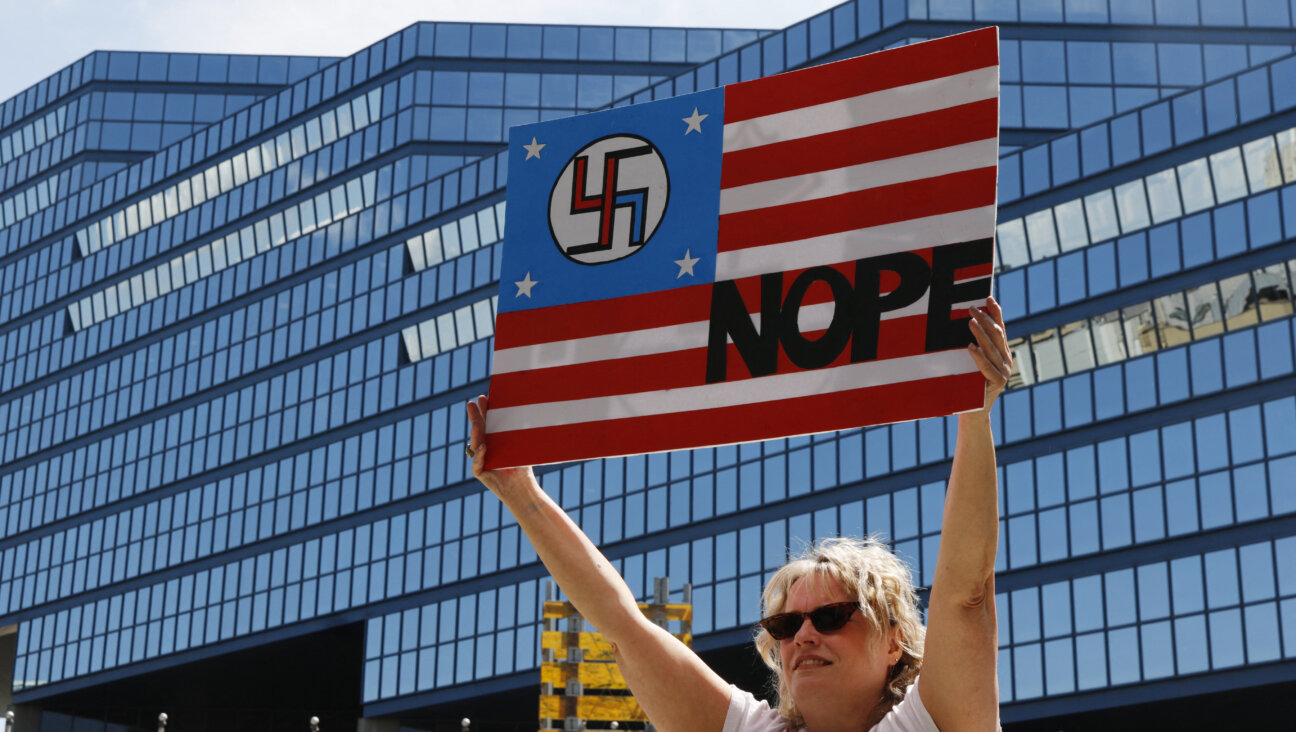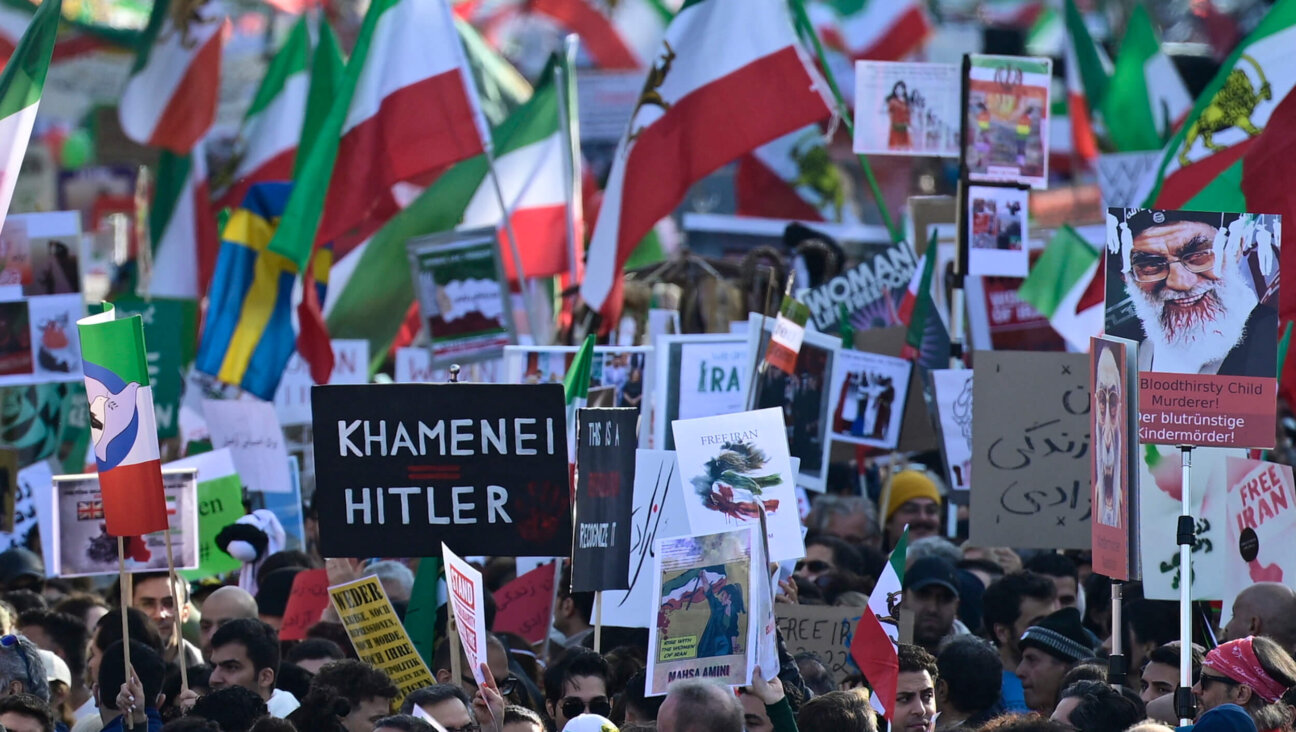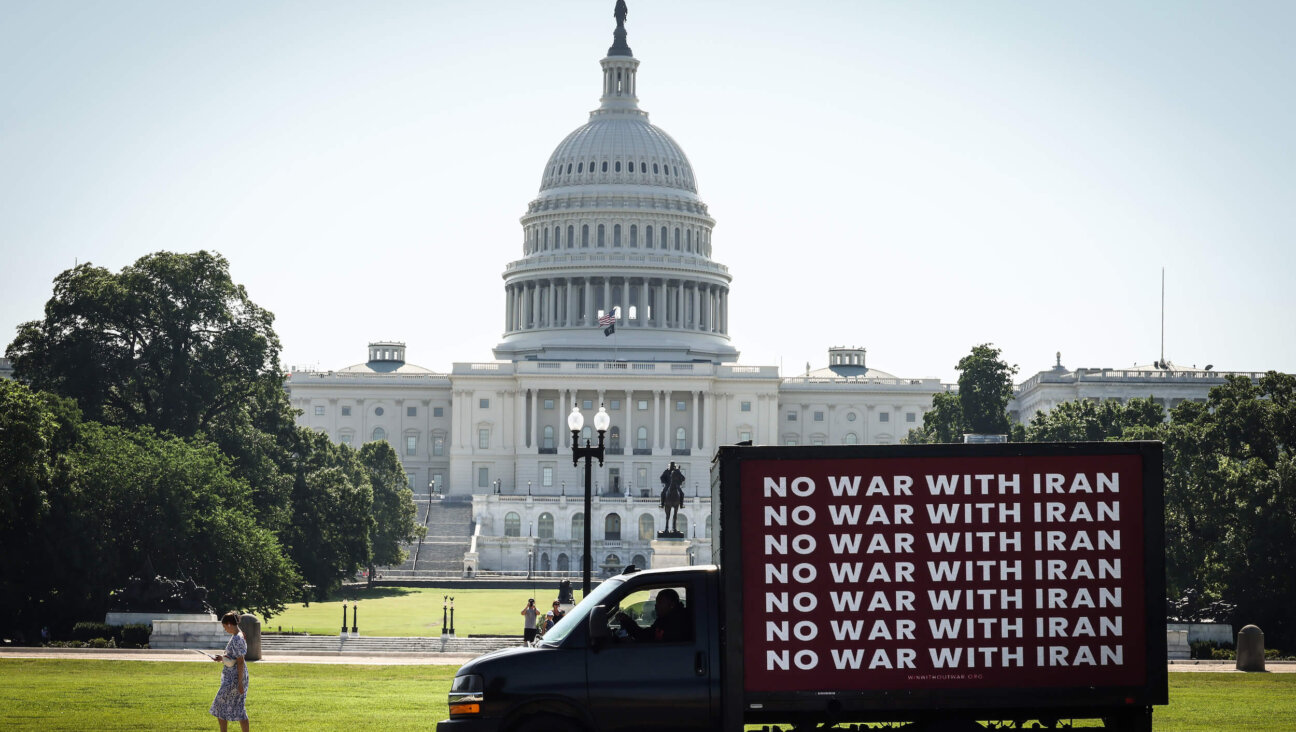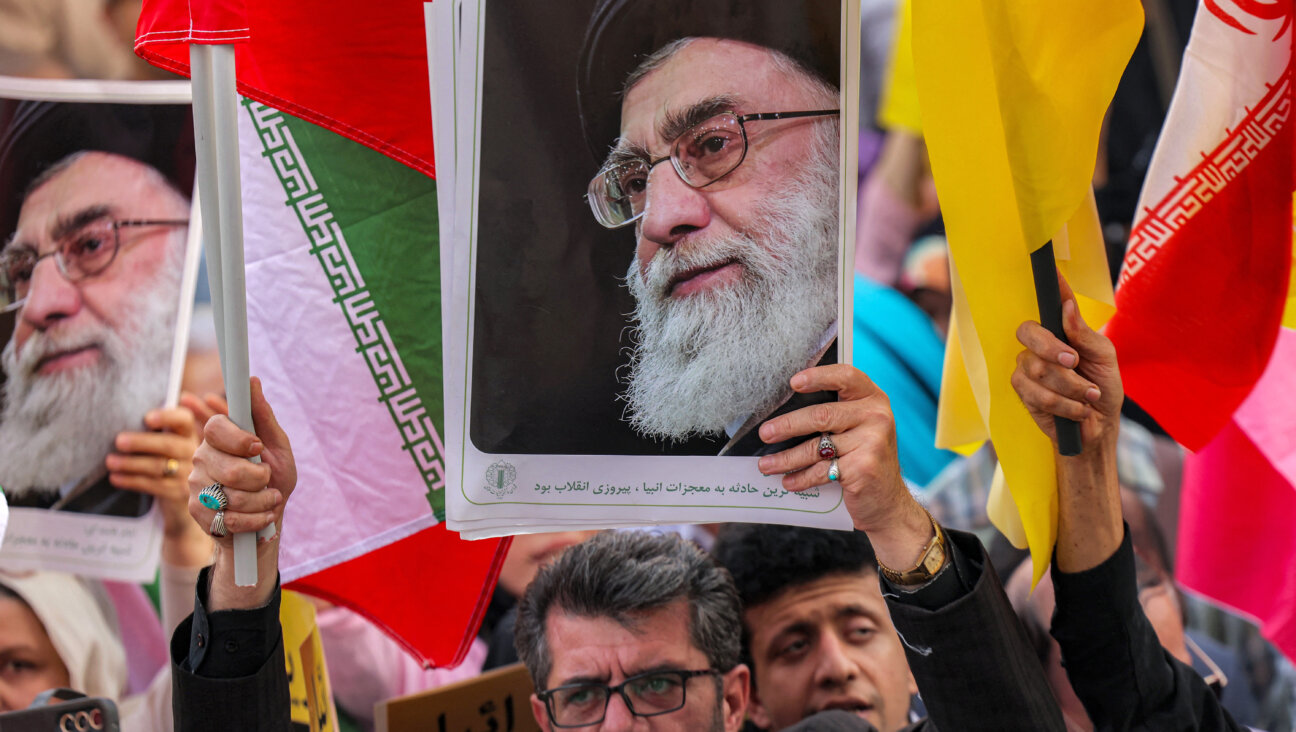Student activists aren’t antisemites; they’re partners in a dance of death
With their extremist rhetoric and tactics, demonstrators risk becoming a mirror-image of their opponents on the far right
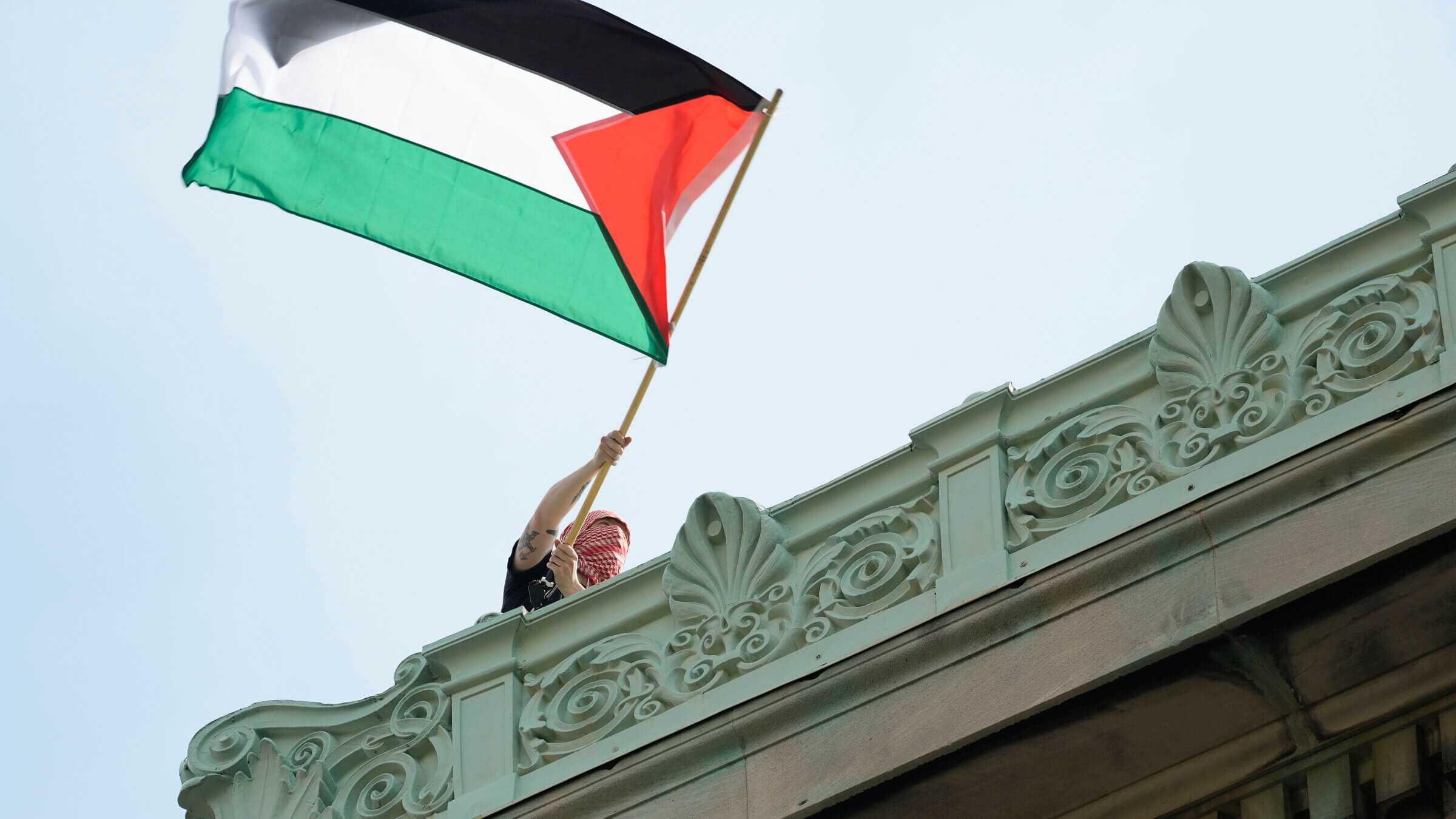
A student protester waves a Palestinian flag above Hamilton Hall on the campus of Columbia University. Photo by Getty Images
Having very recently called out the widespread overreaction to, and misrepresentations of, the wave of campus anti-Israel protests, I would now like to add a caveat: the protesters are also to blame. They have used extreme and counterproductive tactics, tolerated and even partnered with murderous zealots, and taken the most extreme possible positions on the future of Israel/Palestine, undermining the work of peace activists and, ultimately, harming the population they mean to help.
These activists are not antisemites. On the contrary, according to their statements and actions, and in my firsthand experience of many of them, most are motivated by sincere moral concern, and an outrage at the devastation in Gaza. They also vary widely — from campus to campus, community to community. Nothing I say here will apply to every protest or every protester.
But in general, these aren’t pro-peace protests; they are pro-war protests. While many (most?) students are motivated by the carnage in Gaza, the protests’ overwhelming messaging and leadership call not merely for a ceasefire but for the destruction of the state of Israel itself (which would take quite a lot of war). These are not the messengers that the Palestinian cause deserves. On the contrary, they have undermined the efforts of those who have been working toward coexistence for decades, and empowered the activists’ mirror-image extremists on the pro-Israel side, from the vicious counter-protesters at UCLA to the right-wing boardroom activists who have attacked Harvard, Penn, Columbia, and other institutions for their own ends.
1) Tactics that alienate
While many forms of anti-war activism are currently underway, the students’ actions are part of a recent trend that favors shutdowns and takeovers with maximalist demands, rather than careful, tactical actions to force meaningful, if incremental, change. In the words of one activist who has done this work for many years, the theory is that “we have to be willing to engage in social disruption and create crisis for the people in power who are creating harm.”
But that doesn’t work in this instance, where the students’ immediate demand is that universities disclose and divest from their holdings in weapons contractors or Israeli-affiliated firms. That depends on persuading university board members, and these actions do the opposite. (As an aside, most of the universities’ investments are in the form of index funds anyway, not individual holdings.) All the yelling, shouting, occupying and marching, while it may feel empowering to the activists, is alienating potential allies on university boards. Even if the issue gets on the agenda — Brown University, for example, has agreed to vote on divestment in the fall — the votes simply aren’t there, and aren’t likely to be.
Meanwhile, activists have alienated many students and faculty by threatening college graduation exercises and, at smaller campuses like Columbia, making it difficult to hold classes or go about one’s daily life. At some campuses, activists are implementing checkpoints and harassment of students to “raise awareness” of the checkpoints and harassment in the West Bank. Does anyone actually think this will work? It doesn’t build sympathy; it breeds contempt for the tiny percentage of activists who are making life miserable for everyone. (UCLA, for example, has over 47,000 students but only a few hundred at any given anti-Israel protest.) If the wider objective is to build sympathy for the Palestinian cause, the tactics are opposed to the goals. No surprise that, according to this week’s polls, 76% of Americans support sending in the police to restore order.
Shutting things down may feel empowering, but does it really bring change? The Dakota Access Pipeline was built just a few miles away from its projected route, despite the events at Standing Rock in 2016, and meanwhile, the activists’ sitting out of that year’s election helped swing it to Trump, who promised to “drill, baby, drill” and did exactly that. Did any change result from Occupy’s shutdowns of ports and cities where working class people go to work, other than many of those working class people regarding the activists as a bunch of coddled and privileged kids? These tactics alienate. The confrontational style, the strident rhetoric, the uncompromising positions, the uber-woke affectations, the ludicrous missteps — as pundit Josh Barro recently put it, the activists almost beg not to be taken seriously. They make their cause look outrageous, when in fact it is just.
2) Allies (and leaders) who support murder
Furthermore, student activists have shown themselves to be untrustworthy by failing to separate themselves from those who have embraced calls for violence, and failing to adequately condemn instances of antisemitic rhetoric and violence when they have occurred.
It may be that much of this rhetoric is coming from outside the student community. For example, at Columbia, the former encampments were mostly peaceful and non-threatening, but the non-university-affiliated activists on Broadway were routinely harassing Jews — which is antisemitic and deplorable. There were few visible condemnations of these acts, which in addition to being unethical, are counterproductive to the cause. And yet it continues to happen.
Even worse, campus groups have neither cut ties with nor condemned the national Students for Justice in Palestine organization, which cheered the rapes and massacres of Oct. 7, and which has within its leadership numerous figures with direct ties to Hamas and Islamic Jihad. This is not some Islamophobic tirade — it is documented fact. After Oct. 7, SJP called the murderous act a “historic win for the Palestinian resistance” and said on that day, “Gaza broke out of prison.” George Washington University’s SJP chapter proclaimed “Glory to our Martyrs.” SJP is not made up of anti-war human rights activists rightly deploring what is happening in Gaza. Its fiscal sponsor, American Muslims for Palestine, is led by longtime Hamas funders and leaders; it is essentially an arm of Hamas, which, as one Palestinian resident of Gaza recently wrote, has subjugated Gaza for 17 years under its extremist, theocratic, militaristic rule. Being pro-Palestine and anti-war is one thing; being pro-Hamas is quite another.
And it’s not just SJP and Hamas. Campus protesters have often chanted in support of the Houthis (“Yemen, Yemen, make us proud / Turn another ship around”), and Jewish Voice for Peace recently posted a photograph of a crowd of Houthis in support of the protesters. But look closely at that image, and you’ll see that one of them is carrying a poster bearing the Houthis’ slogan, which reads “God is Great, Death to America, A Curse Upon the Jews, Victory to Islam.” Is this a group that any progressive activist should support? Is the enemy of my enemy my friend, even if he calls for cursing Jews and victory in holy war?
3) Maximalist rhetoric that undermines coexistence
Like their allies, student protests have elevated an eliminationist, uncompromising, extremist vision of Palestine to the exclusion of all others. This position makes visions of coexistence look naïve to those who support Israel and unjust to those in solidarity with Palestine. But ultimately, it hurts Palestinians.
There are many forms of peace activism, and many visions of peace between Israel and Palestine. Palestinian led or co-led groups like Standing Together, for example, have combined powerful calls for ceasefire and coexistence with a deep recognition of the fundamental injustice of the Occupation. But the student activists in the current wave have embraced a maximalist agenda in which the state of Israel is illegitimate and “Zionists” are settler colonialists with no claim or tie to the land. As if competing in a contest of Radical Chic, they use ever more incendiary terms — intifada, genocide, Nazism — that demonize Israelis and make anyone who has worked for coexistence look like a collaborator. After all, who can equivocate on genocide?
Some of this extreme rhetoric may be due to ignorance: a 19-year-old may simply not know that “intifada” has meant, historically, bus bombings and the murder of civilians. Then again, they may think that there are no Israeli civilians, because every Zionist is a settler-colonialist. Or perhaps they mean it as simply denoting a struggle for liberation – but even then, the fundamentalism of “There is only one solution/intifada revolution” insists that there is only one path to liberation. At the very least, it’s tactically shortsighted to embrace a word that means, to most Jews, “I am justified in killing your grandmother who lives in Haifa.”
If you go carrying pictures of Chairman Mao, John Lennon sang, you ain’t gonna make it with anyone anyhow. That is still true. But it’s worse than non-persuasion, because when activists go maximalist, they empower the maximalists on the other side. Look, these people hate us, says the Israeli Right and their Amen corner in America, so we have to defeat them first. These activists are making the Far Right’s point for them.
This movement has never in its history put forth a realistic, non-genocidal vision of how the “total return and liberation to Palestine” is to take place. There are seven million Jews living between the river and the sea. Most will not leave. Nor will they accept being ruled over by people who think, per recent rhetoric, that they are illegitimate settler colonialists who support genocide and who deserve to be raped. So what is supposed to happen? A bloody war? UN troops on the ground to enforce a solution Israelis detest? Or perhaps we Jews will all be persuaded to self-immolate over a cup of organic tea? Then we will be “allowed to live,” in the words of one deeply uninformed Twitter user, “in the new multicultural socialist Palestine.” Or in the alternative, as one activist suggested, we can simply “go back to Poland.”
There are visions for peace, justice, and coexistence between Israelis and Palestinians. They involve two states, or a confederation, or even one democratic state that is agreed to by all, or some other way for seven million Jews and seven million Arabs to live between the Jordan and the Mediterranean. But this movement of activism has none — it only has a maximalist position that requires either magical thinking or ethnic cleansing.
In other words, these activists are the mirror-image of Israel’s far right, which likewise seeks sole dominion over the territory between the river and the sea, which likewise is utterly deluded in terms of what its adversaries and the global community will accept, and which likewise supports ethnic cleansing – and, yes, genocide.
I recognize, of course, that many students do not believe all of this, and are joining the protests not because they’ve signed onto a particular agenda, but because these are the protests of the moment. But these students need to think again, because however good their intentions, and however appalling the plight of Gazans is, they are joining in a movement that is fundamentally eliminationist, extremist and violent.
And, in the end, profoundly harmful to the Palestinian cause. The demonization of Israel, the extremist rhetoric, the tolerance of antisemitism, the theocratic fundamentalism, the association with Islamist terrorism, the maximalist positions — all these undermine legitimate Palestinian demands for justice and freedom. Ultimately, there is no alternative to coexistence. Palestine will not be free “within our lifetimes,” as the saying goes, through the efforts of Hamas, the Houthis, and their allies; they will only plunge Israel and Palestine into hell — except the Palestinian hell will be far worse, because Israel has the guns and the army. The Israeli Far Right and the Hamas/Houthi/SJP extremists are partners in a dance of death.

